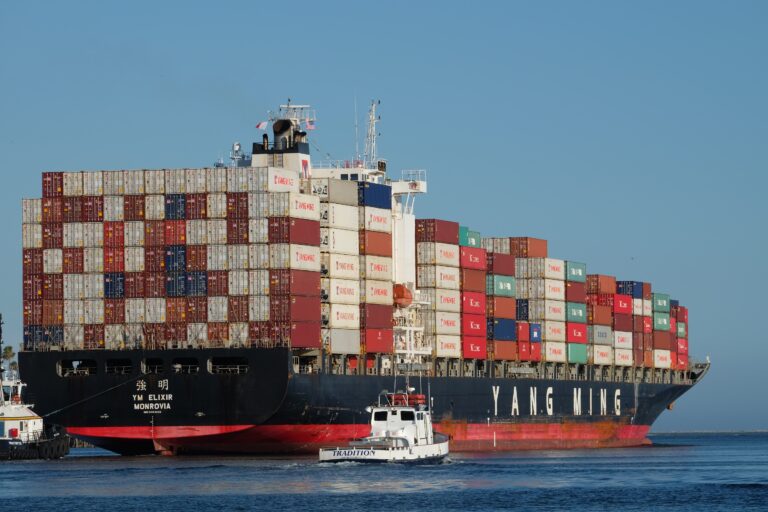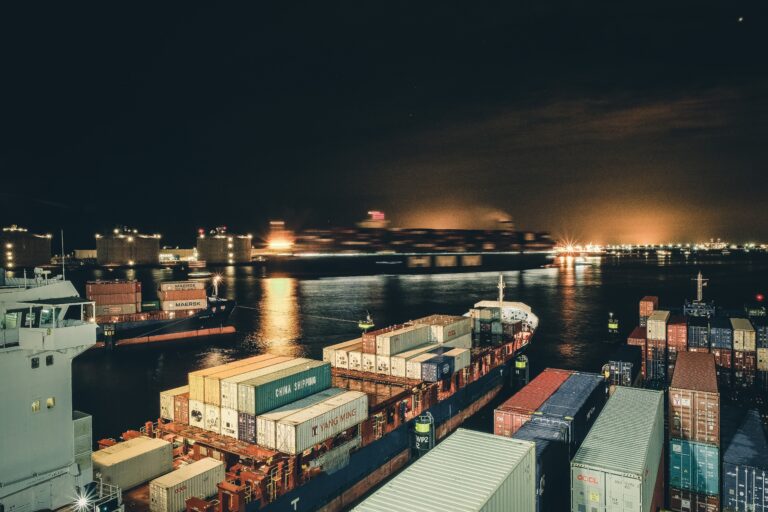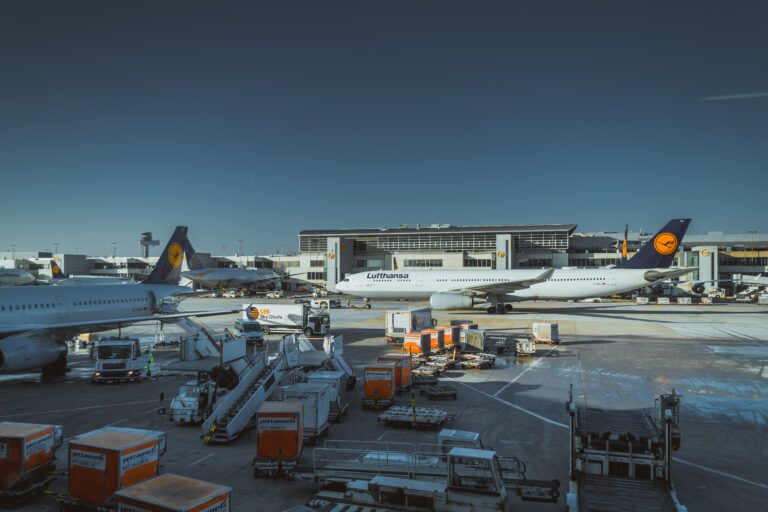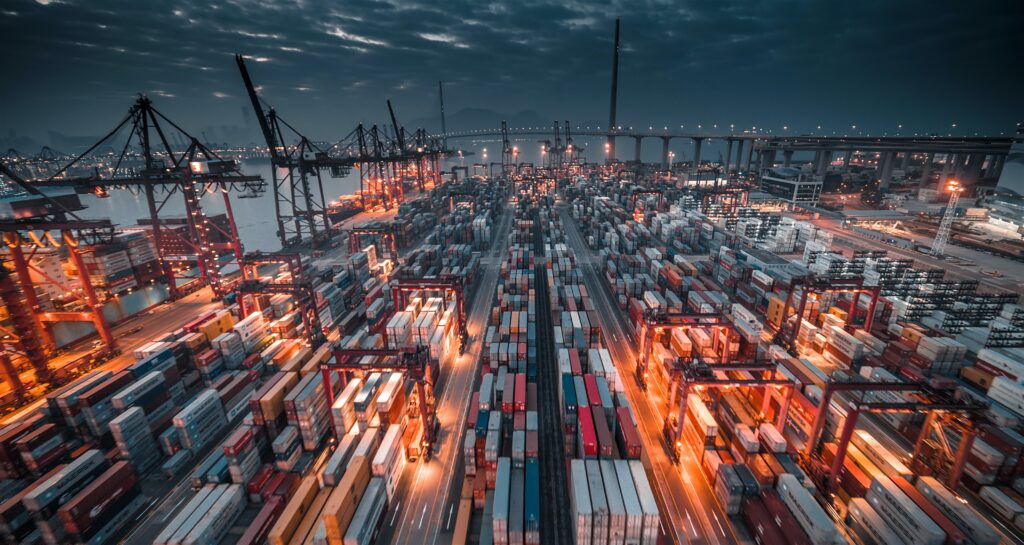Featured image: Hong Kong port – Photo by Timelab Pro
Global freight largely goes unnoticed, no news is good news so to speak, and we take for granted the (apparent) ease of shipping goods from A to B. Enter Corona virus and political complexities in Brexit and US-China trade.
I am sure you have noticed some disruption across your own supply lines and hopefully I can shed some light on the situation from our own experience as a UK based company with close trade connections with China. I will not go into any Brexit implications here as the picture continues to unfold but expect an update in future. This is a quick commentary on recent happenings in global freight and the upheaval caused by the COVID pandemic.
Early in the pandemic, with global markets in chaos and an extreme change in consumer behaviour demand for container shipments tanked by 30%. By the end of May, the inactive container shipping fleet reached an all-time high of 11.6% or 2.72m Twenty-foot Equivalent Units. More here… Of this 571,858 TEU were vessels undergoing scrubber retrofits. In China, many scrubber retrofits (to bring vessels in accordance with low-sulphur fuel directives) were held back from the start of the year as the coronavirus disrupted industrial activity and shipyards. More here…

The impact of fleet inactivity should not be exaggerated however in hindsight carriers over-estimated the demand contraction in May and capacity shortages on trade routes began to push spot freight rates up. Subsequently in the latter half of the 2020 with demand surging but fewer container ships, poor return flow of empty containers, congested ports, and increased cargo rollover meant shipping lines further increased premiums to maintain service level. Carriers rushed to resume suspended services from Asia to North America and Europe and reintroduced laid up vessels to boost capacity. By mid-August, the inactive container fleet was down to 4.1%. More here…
Following the nation’s strict COVID response, China was first out and first back to export readiness with a renewed appetite for empty containers. However, the return flow of empties to Asia has been largely disrupted resulting in slowdowns at ports worldwide. Ships that are running late are not staying to collect empty containers, leaving container mountains in their wake. Docks do not have the space to store empty containers, so they are transported to storage yards meaning further pressure on haulage and increasing delays. In November, full storage yards led to several container trucks arriving at a disused plot of land in Melton, a village 10 miles inland from Felixstowe. More here…
Another difficulty is even if a Beneficial Cargo Owner can obtain an empty container, the cargo might not even make it onto a ship. More than a third of containers were rolled over (containers that do not make it onto the original vessel are rescheduled for another) across transshipment hubs and some primary ports in December. While carriers and ports are trying to stem rollover through actions such as putting on extra loaders backlogged cargo diminish any gains. Much of the concern for rollover cargo is for reefer containers as shortages on power points can ruin perishable cargo. Though at the time of writing we have personally seen some bizarre instances of reefer containers being cheaper than ambient as the demand is so high. More here… and here…
Over the winter months UK ports turned to custard (or rather eggnog?). Consumer demand leading into the holiday, businesses shipping before the end of the Brexit transition period, and the UK Government prioritising PPE shipments for a second wave all led to port congestion. Unable to unload at Felixstowe, ships were rerouted to Southampton, Liverpool and Rotterdam, with UK bound goods going first into EU and then trucked into Britain. More here… The PPE congestion is largely abated but we are now facing slow-downs from the complexities of in-bound and out-bound goods destined for the EU. Brexit warrants its own post so more on that later.

The culmination of negative conditions has continued into 2021. Ongoing challenges sourcing containers and extended transit times are reflected in freight rates. As seen in the chart below ocean freight spot rates are more than double last year.
The SCFI reflects the spot rates of the Shanghai export container transport market. It includes freight rates and the associated seaborne surcharges of 13 major container trade routes (from Shanghai) and a composite index which is the weighted average of all routes.
Powered by TSBA.mobi GoogleGraph WordPress plugin
China’s Ministry for Commerce may look to stabilise freight rates (as they slow exports) though carriers will argue problematic capacity management. More here… Latest January data suggests container spot rates have peaked and may even ease slightly on the transpacific tradelines. Margins are generally more attractive on the Asia – America routes so more of the limited empty containers are assigned to these routes, impacting European demand. The Asia – North Europe rates are expected to be maintained and quotes for shipments to the UK may be bleak. More here… On back routes many carriers are refusing to accept US agricultural exports in favour of returning empty containers to China to be filled with more profitable Chinese exports. An estimated 177,938 TEUs were rejected over October and November. More here… This may be further exacerbated as in China imported containers carrying frozen foods undergo sanitary fumigation offsite and the goods’ inner and outer packaging tested for Corona Virus nucleotides. If found a penalty is levied on the importers.
The pandemic has also impacted air freight. Usually about half of all air freight travels as belly cargo on international passenger flights. With these flights greatly reduced, cargo operation has been an important lifeline to airlines and in keeping global supply chains running. Early in the pandemic there was a need for urgent transportation of cargo such as PPE. To accommodate demand several airlines undertook passenger-to-freighter (P2F) conversions, initially with cargo on seats and later with cabin reconfigurations. Over the course of 2020, a total of 155 passenger aircraft (mostly widebody) had seats removed to transport cargo. More here…

Difficulty in forecasting demand swings during unprecedented times provide little clarity as to when the situation will improve and high freight costs are expected until the Chinese New Year and possibly into mid-2021. Even though Carriers are likely to reduce the relatively high blank sailings over the CNY, longer transit times and more containers sitting at port are expected. Unfortunately, in the short term either costs will have to be absorbed or prices increased. The good news is things will settle in due course but the question is how cost-effective can we really expect global Just-In-Time supply chains to be under ‘normalised’ pandemic conditions?

